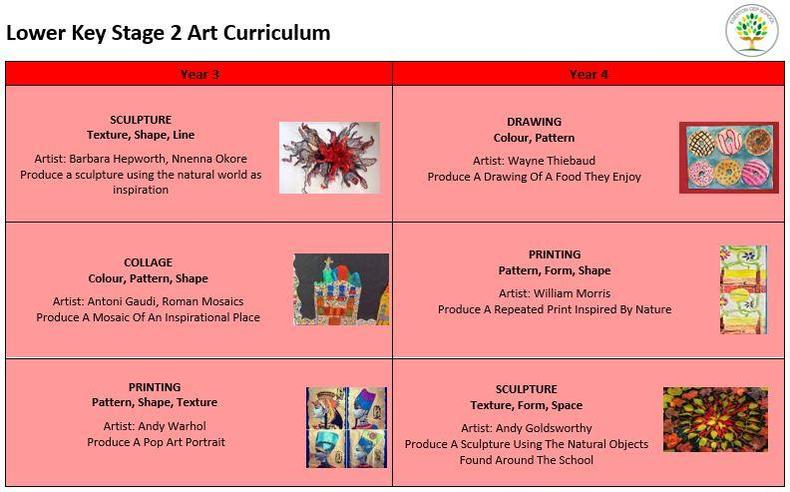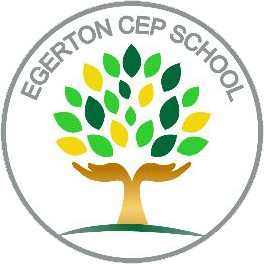Art and Design
What is Art and Design?
Psalms 33:5
"The LORD loves righteousness and justice; the earth is full of his unfailing love."
Intent
Our Art and Design curriculum will provide children with a deepened understanding and connection of the world and people around them as they explore, create and evaluate a range of art and design products, processes and techniques. Children will be exposed to a range of artists that work in similar and different ways, expanding what children understand as being art, and art’s narrative through history as they think critically and develop a more rigorous understanding. Our curriculum is designed so that children learn art is not one set thing but a broad spectrum and that children are engaged, inspired and challenged by this. Children will develop their knowledge as they develop proficiency using media, materials, techniques and technical vocabulary equipping them with the knowledge and skills to be able to experiment, invent and create their own works of art.
Through high quality teaching, we develop the following essential characteristics of artists:
- Appreciate the work of a range of artists and designers, and consider their motivations;
- Attempt to infer and interpret the meaning behind pieces of work and come to decisions about an artist’s possible intentions;
- Assist children in becoming visually literate and support them in their understanding that art can link to real world issues;
- Develop aesthetic sensibilities to make judgements about art and to make connections between other concepts and personal thoughts;
- Encourage the use of imagination and original thought;
- Consider the role art plays when providing opportunities to learn about the local area and the world in which we live;
- Develop the ability to communicate ideas, opinions and feelings about their own work and that of others;
- Develop automaticity and proficiency when creating and making art and design pieces;
- Encourage children to be able to respond knowledgeably to the work of other craftspeople, knowing that there are different kinds of art made for different purposes;
- Acquire a range of different skills using different media as the children progress through the school;
- To recognise that learning about art and design enables links to be made with other subjects across the curriculum including geography, history and Religious Education;
- An extensive base of technical art knowledge and vocabulary;
- A genuine interest in the subject, and igniting an internal motivation to explore and practise the skills taught beyond the classroom.
Implementation
Art and Design is taught as a key topic focus for half a term (as is Design Technology) but we also aim to ensure that it is integrated into other areas of the curriculum and that sketch books are used throughout the year.
Our Art and Design curriculum aims to enable children to develop their skills as artists as they create, develop, experiment and evaluate a range of pictures, painting and sculptures. The key concepts, line, shape, form, space, colour, tone, texture and pattern are embedded within our curriculum plans so that children develop their proficiency in them. The art of painting, printing, collage, sculpture and drawing are our golden threads that enable children to revisit, consolidate and develop key skills from Year R through to Year 6. The Art and Design curriculum is planned so that there are opportunities for cross curricular links to be made to ensure the children appreciate the historical concepts and intentions for creating pieces of art as well as providing opportunities to apply their knowledge and understanding.
There is an artist link for every Art and Design unit of work. With reading being central to our curriculum, in Art and Design children develop their visual literacy skills as they to learn to ‘read’ pieces of art. Understanding art work is being able to infer and interpret the meaning behind the work and come to decisions on the artist’s intentions. Through critical evaluation, children are able to form and discuss an opinion based on evidence or personal thoughts. We recognise the importance of understanding the local area and heritage and have linked one unit of study to a local artist who works collaboratively with the children.
Art and Design lessons will include: the practical development of key skills, which over time, will allow children to develop their proficiency and accuracy when conveying an intention; disciplinary knowledge as they understand that art has multiple dimensions understanding how they can be creative and expressive, and theoretical knowledge as they learn about artists using them to make comparisons and inspire their own work. Children complete a final piece of artwork at the end of each unit. The programmes of study are carefully planned and delivered showing progression, enabling our pupils to develop their art skills and knowledge.
Children use sketchbooks to record their creative thoughts and ideas. As well as using sketchbooks during Art and Design and other curriculum based lessons, children use them as a space to freely express themselves, often with limited guidance from the teacher. Sketch books are used on an ongoing basis to encourage creativity, automaticity and allow children to continuously experiment with shapes, lines and techniques.
The school supports and takes part in the local triannual community event: Egerton Arts and Music Week. Children take part in a programme of events such as viewing the work of local artists at an art gallery, attending art workshops and taking part in creating collective pieces of art.
Impact
- Opportunities for children to understand and apply the key art skills and techniques which are used within children’s final pieces of art.
- A knowledge of artists, craft workers and designers with an understanding of their motivations and intentions for their audience.
- Children will have the knowledge and skills to explain and justify their thoughts on their own and others artwork
- To participate in collective works of art and feel a shared purpose in the designs they create.
- Children will appreciate art is used to promote, convey and symbolise real-life issues.
- Children will be creative and experimental learners.
- Children will make links between their own work and work produced by local artists.
- There will be a clear progression of skills across EYFS, Key Stage 1 and 2 that builds on prior knowledge that can be demonstrated in sketch books and class floor books and shows good or better progress in art from their starting points.
- Children will have a good understanding of key art phrases and vocabulary.
- Our children will be confident artists and be able to clearly discuss their learning from past and current topics, as well as explain their next steps.
- Out-of-class opportunities ensure skills learnt in art are ongoing and embedded as part of the Egerton ethos.
- Continued training and support for teachers ensuring they are the experts in the subjects that they teach.
Art Curriculum




